Danger of Mold in Your Attic Which is HiddenFramingham is home to a tropical climate, and the hot, humid weather makes it ripe for mold growth. Mold thrives in moist environments like attics because of their dampness that provides an ideal setting for its rapid proliferation. This fungus poses a serious risk as it can lead to respiratory tract infections or allergic reactions among other issues when inhaled by residents of your house. Mold is a silent, but deadly menace lurking in the dark corners of your home. This invasive fungus can grow on virtually anything and it doesn't discriminate - not even metal! Mold could be destroying your property without any warning whatsoever if you don't get rid of it sooner rather than later. Dangers to your homeStructural deteriorationMold can be dangerous for your roof. If it gets inside, the fungus will make its way to the attic sheathing and other interior components of your home's structure. It is not noticeable until late because when it first appears on the outside, most people think that they're just dirty spots or discolorations as opposed to mold infestation! Inspecting regularly ensures you catch any incidences early enough before a situation becomes too out-of-hand with mold damage already done :( SEE ALSO: siding installation service Affected insulationMold may affect your attic insulation. If this happens, you will have to remove the insulating material and replace it all with new materials that are mold-proof. However, if not taken care of in time, spores can be discharged into large quantities through ventilation systems or pipes for a long period before spreading throughout other parts such as ducts and HVAC units leading up to where inhabitants live inside an area like their house. Ceiling issuesThe moldy attic will also have a negative effect on the ceiling. The yellow or black patches can be unsightly, but that is not all it does to your ceilings. It gradually weakens and deteriorates the material until it falls off in due course! Dangers to the residentsThe health issues caused by this insidious mold are many and diverse. The spores themselves can cause a variety of respiratory infections, with black mold being the worst kind because it is more poisonous than other kinds. If you happen to have an allergy or asthma condition already then these symptoms will be worse for you due to your body's oversensitivity during periods of infection from what may seem like just some annoying allergies at first glance! Dangers to your belongingsMold is a pesky little fungus that can destroy anything in its path. When you neglect certain aspects of your home, mold spores can find their way inside and slowly consume everything in sight. Not only does this make things unsightly but it also ruins furniture, carpets, and floorboards! Do You Need an Emergency Roofing Contractor?Regular roof maintenance and roof inspection will go a long way towards improving the longevity of your roof repair. The above information will help you protect that investment by avoiding costly home roof repairs or replacement roofing projects in the future! At Framingham, Roofing Company is licensed and insured. We can install roofing, provide residential roofing replacement and roofing maintenance with proof of quality. Give us a call at 508-544-0877 to learn all about how we can help you with quality materials to provide quality roofs for your home. RELATED CONTENT: siding installation service
0 Comments
Metal Roof Benifits in FraminghamFramingham's location in a zone that experiences unpredictable weather has caused many roofing problems for homeowners. The summers are so hot and stormy, but it can rain all year long! This climate calls for durable materials as metal is the most reliable option to withstand these harsh conditions. Climate toleranceWhy do metal roofs make such great houses? Metal is resistant to strong winds, does not warp in the sun or blister when it gets hot, and UV-rays have little effect on its coat of paint. And finally, they don't hold water which can damage other types of materials like wood structures. Life-expectancy and sturdinessMetal is very strong and ordinary debris or small tree limbs do not affect it. The service life can extend to 70-80 years, which equals the lifespan of an average human being; so a metal roof is often referred to as lifetime material. Fire safetyMetal is a fire-resistant material, so if you use wood or asphalt shingles as roofing materials they have to undergo expensive treatments. Since metal does not need it, the savings are there for you! SEE ALSO: gutter repair framingham Resistance to bio-growthMetal roofs never have to be painted because they are impervious to water. An eco-friendly Metal roof is a great choice for your Framingham home if you want an elegant look that will keep mold and mildew away, as well as ensure the health of your family and property. A green optionUpcycled metal is 100% recyclable and can be made into new sheets, making it a sustainable resource. Asphalt shingles are not easily recycled due to the long period before they break down in landfills so this pollution often has adverse effects on our environment. Energy efficiencyA metal roof can be a great way to save money. They are durable and they help reduce the exterior temperature of your home by reflecting heat into space, thereby reducing energy costs on heating bills in winter months while also lowering cooling bills during summertime. Easy to installThe metal sheets are, by far, the lightest of all roofing materials. So they're easy to install and transport without requiring much effort on a person's part. They save time--both in installation and with other supplies for upkeep down the line because there is less weight bearing down on them than most roofs would experience! Cost-effectiveMetal roofs are the best option for homeowners who want to save money on their energy bills and have a roof that will last longer. Though they can cost more upfront, metal roofs provide many benefits in both the short-term and long-term such as reduced maintenance costs, greater service life than other materials, and savings from lowered utility expenses. Variety in designThese days, metal roofing is available in a variety of shapes and sizes. Gone are those old traditional corrugated or smooth sheets that used to dominate the market. Nowadays, one can choose between many different designs which have only made it more popular with modern homeowners! AestheticsMetal roofs are available in a wide range of colors. With the smooth and shiny appearance, you can add to your house's aesthetic appeal by choosing from this variety of color choices. You also help increase curb appeal for when potential buyers come over to look at your property! This boosts the market value which means more money on top of all these benefits! Do You Need an Emergency Roofing Contractor?Regular roof maintenance and roof inspection will go a long way towards improving the longevity of your roof repair. The above information will help you protect that investment by avoiding costly home roof repairs or replacement roofing projects in the future! At Framingham, Roofing Company is licensed and insured. We can install roofing, provide residential roofing replacement, and roofing maintenance with proof of quality. Give us a call at 508-544-0877 to learn all about how we can help you with quality materials to provide quality roofs for your home. RELATED CONTENT: gutter repair framingham
Ignoring a Roof Leak May Leads Into ProblemFramingham, Massachusetts is a place of rain. It rains intermittently throughout the year and sometimes so hard that roof leaks are inevitable. However late these leaks appear to be in manifesting themselves, it's imperative not to neglect them because they can lead to serious damages for your property if ignored over time. Structural damageRoof leaks are not usually very obvious at the beginning. You may just feel the humidity in your attic and ignore it, but soon you will see signs of mold growth or discoloration on your ceiling resulting from neglecting visible manifestations for too long. If this happens, be sure to get an inspection done by professional roofers as soon as possible so they can fix any problems before major damage has occurred! SEE ALSO: gutter repair framingham Attic deteriorationWood rotOne of the major issues with roof leaks is attic deterioration. The problem starts when you increase humidity in your attic, which can lead to wood rot and other problems like mold growth. Soon it will be necessary to replace any damaged wooden components up there so they don't make everything else worse! Mold & mildewYour attic is an excellent breeding ground for mold and mildew. This bio-growth will affect the stored materials in your attic, including all of those family heirlooms you love so much! Besides, their spores will travel to other sensitive parts of your house like living spaces through various ducts and pipes. The consequential developments from this would be detrimental to your health as well as furniture, carpeting, or clothing at home with time spent there too. Deterioration of the attic insulationThe attic is the perfect place to store your precious items, right? Wrong. The extremely humid ambiance of this space will distress insulation materials and deterioration will set in faster than you can say mold. When it comes down to an unsafe environment or a new roof for your house- choose wisely! Affected electrical connectionsAttic water damage can be very dangerous. It may create ample chances for a short circuit that is known to produce sparks, and these could easily start fires in the attic or outside of your home! Moisture build-up also increases electrical resistance at wiring junctions leading to an increased risk of a fire starting on another wire that has no moisture around it- even if they are not touching each other. Deterioration of plumbing componentsWith the help of a flashlight, you can see that your attic is moist due to water dripping through it. This moisture will make things worse because this creates another source for leaks in your house and deteriorates joints and costs more money to fix than just replacing them quickly before they get any worse. Ceiling damageIf you've noticed that your ceiling has been getting darker and more discolored, this may be due to the roof leaking. The dampness will cause parts of the ceiling to break off from water damage in areas where there are no tarpaulins used for protection or leaks go undetected. Property damageThe roof is an integral part of your Framingham house. It protects you, the family, and property from storm damage or other external threats but if it leaks then havoc can ensue inside as well with puddles causing slip and fall accidents for small children who are forced to walk over water-logged floors. If these spills reach delicate appliances such as microwaves they may become damaged too which will only cause more problems down the line. Rust on doors and windowsThe metallic parts of the doors and windows stand in great danger from moisture as well as water trailing along the walls. These parts will be very difficult to operate once they start rusting, which is why homeowners need to take proactive measures such as using protective coatings on these metals or replacing them with materials that won't corrode so easily! Shabby interior and exterior wallsSome people might think that a house whose exterior has been well-maintained is uninteresting. They would be wrong, though! The outside of your home may not have as many stories to tell, but it does speak volumes about the care you take in maintaining and caring for yourself or family members living there. Escalating utility billsAre you wondering why your home is starting to feel stuffy and hot? A good chance it's due to a leak in the roof. The adage of "timely prevention" can't be any more appropriate than in this situation! When left ignored, even small leaks will grow into massive problems that require expensive repairs down the road - not just on roofs, but also other vital areas around your property like windows as well. Contact us now before these issues escalate out of hand with long-term consequences for your wallet too! Do You Need an Emergency Roofing Contractor?Regular roof maintenance and roof inspection will go a long way towards improving the longevity of your roof repair. The above information will help you protect that investment by avoiding costly home roof repairs or replacement roofing projects in the future!
At Framingham, Roofing Company is licensed and insured. We can install roofing, provide residential roofing replacement, roofing maintenance, and gutter repair Framingham with proof of quality. Give us a call at 508-544-0877 to learn all about how we can help you with quality materials to provide quality roofs for your home Commercial Roofing RepairsMaintaining the integrity of your commercial building is an important aspect of maintaining uninhibited and hassle-free business activities. The wellbeing of a roof plays a crucial role in this because if it becomes damaged, small or big, you stand to lose substantial amounts of money. That's why proactive maintenance should be utilized in Framingham! Roofs are a prime example of something that you do not want to wait until the damage has been done. If you inspect your roof every day, it will be much easier to detect any problems before they get worse and more expensive! SEE ALSO: gutter installation contractor The factors that cause commercial roof damageCommercial Roof Age You might not know it but your roof is probably older than you think. A side effect of this advanced age can be significant damage that needs to be repaired or replaced soon before the next rainfall causes even more problems for you, like rotting wood and mold growth in addition to leakages! Luckily, routine inspections will warn us about any damages so we're able to repair them before they get worse-or replace an old roof with a new one if necessary. Collateral damages resulting from the repair of AC/electrical repairIf you do not want to suffer any further water damages and leaks, your roof inspection must be careful. If the workers are careless in their work after repairing other installations on top of yours, they may leave small holes or cracks for more problems to occur down the line. The best thing you can do now then stops them from leaving these issues behind by fixing them right away before anything else happens! Unprofessional installationFor the safety of your employees and customers, make sure you hire a roofer with commercial experience. Commercial roofs are more complicated than residential ones because they're dealing with all sorts of factors that may be overlooked if they don't have enough experience. Common setbacks that impact your commercial roof healthDamage to the roofing materialsRoofing materials have the difficult job of enduring all sorts of weather. The heat in Framingham can be especially burdensome to these roofing components when they are trying their best not to buckle and warp under pressure from UV rays, which also affect them adversely. When asphalt shingles curl or warp due to exposure to UV rays, it is necessary for homeowners in this area that such problems should be remedied without delay before a wind blows away any missing pieces on your roof while you're still waiting! Water poolingIf you have a flat roof or one with a shallow pitch, it is best to watch out for puddles during the rainy season. Puddles will form on your roofs because of any imperfections in installation and debris build-up over time. These puddles can slowly penetrate your roofing material which can lead to problems like water leaking into other rooms inside the building as well as corrosion over time from standing rainwater that sits too long on top of metal materials such as copper gutters! Drainage systemsThe drainage systems and scuppers are subject to clogging due to debris accumulation, which can be a problem. You should see that the periodical cleaning of these structures is done thoroughly by your company for them not to become problematic down the line. Flashing damagesRoof flashing is a part of the roof that you don't want to ignore. Cracks and deformities in your metal sheeting or problems with cement can cause leaks, which will lead to major damage to your property over time. When inspecting for any problems like these, always pay attention at the base where roofs meet walls - this is often where minor complications are found before they become larger ones! Improper pitchingOne of the most important aspects of any commercial roof is how it was pitched. If this process isn't done by a professional, and if not enough care isn't taken into account while installing these roofs, many possible consequences can happen to your property in the future! Flow off from adjacent buildingsRoofing has become a pressing issue for commercial buildings that are situated close to one another. The roof of your building might be affected by the flow off from other adjacent structures, so provisions should be made before construction begins on-site. You may not have much say over how many floors your company builds up into the sky but you can certainly request an experienced team who will ensure there is proper protection against water damage and poor performance due to leakages or clogged gutters. Do You Need an Emergency Commercial Roof Repair?Regular roof maintenance and roof inspection will go a long way towards improving the longevity of your roof repair. The above information will help you protect that investment by avoiding costly home roof repairs or replacement roofing projects in the future!
At Framingham, Roofing Company is a licensed and insured gutter installation contractor. We are able to install roofing, provide commercial roofing replacement and roofing maintenance with proof of quality. Give us a call at 508-544-0877 to learn all about how we can help you with quality materials to provide quality roofs for your home. Tips for New Homeowners By Residential Roofing CompanyNot everyone can have an expansive backyard to escape the heat of summer, so we must rely on our roof for shelter. However, if your house isn't up-to-code with a sturdy and secure roof in Framingham, you're asking for trouble - it's important that as new homeowners you inspect this area closely! In today's article, we will go over common issues related to roofs here in Framingham. What are the signs that point towards immediate roofing contractors?
SEE ALSO: gutter installation contractor Where do you look for potential trouble?
What are the right ways to go about roof repairs?
Do You Need an Emergency Roofing Contractor?Regular roof maintenance and roof inspection will go a long way towards improving the longevity of your roof repair. The above information will help you protect that investment by avoiding costly home roof repairs or replacement roofing projects in the future!
At Framingham, Roofing Company is licensed and insured. We are able to install roofing, provide residential roofing replacement, roofing maintenance, and gutter installation contractor with proof of quality. Give us a call at 508-544-0877 to learn all about how we can help you with quality materials to provide quality roofs for your home. Rooftop Leak TroubleshootingThe homeowners should never ignore any sign of a roof leak. All too often, these minor leaks turn into major ones that can lead to huge financial losses for the homeowner if they do not take care of it as soon as possible. A guide on everything there is about dealing with and repairing this type of leak will help you know more than most people to keep your home's value intact and avoid costly repairs down the line. Signs of a roof-leak
SEE ALSO: roofing specialist Reasons of roof-leaks
How to find roof-leaks repair in FraminghamFinding out where your roof is leaking can be difficult, but it's easy to do if you prepare ahead of time. Before the rain starts, look for potential origins of leaks and set up a plan with someone else at home about how to find them when they happen. After the storm has passed, pour water on top of areas that are most likely sources so that any hidden holes will show themselves in no time! If all else fails - contact an expert who knows exactly what they're doing! Do You Need an Emergency Roofing Contractor?Regular roof maintenance and roof inspection will go a long way towards improving the longevity of your roof repair. The above information will help you protect that investment by avoiding costly home roof repairs or replacement roofing projects in the future!
At Framingham, Roofing Company is licensed and insured roofing specialist. We are able to install roofing system, provide residential roofing replacement and roofing maintenance with proof of quality. Give us a call at 508-544-0877 to learn all about how we can help you with quality materials to provide quality roofs for your home. Minor vs Major roof RepairWhen you see that the leaves are turning brown and falling to your lawn, it is time for a new roof inspection. You can't wait until after winter because there have been plenty of instances in which roofs were damaged by winds last fall before being covered with snow or ice during winter. The worst thing about your springtime rooftop repairs? For one, they will take up much more labor resources than any other kind of project since most people don’t build their own homes anymore. Minor Roof RepairsLet's not overlook the small problems. Yes, they may seem inconsequential and unimportant now - but this could be a costly mistake in time to come! These minor issues can lead to major ones that compromise your home from within. So don't wait until it becomes too late; take care of them today with some DIY projects around your house before something goes seriously wrong tomorrow! SEE ALSO: roofing specialist
Dealing with lose nails on the rooftop and projecting nails in the atticWhen you notice those shingles bubbling up, don’t just take a hammer to them. That might not fix the problem and will most likely make it worse by breaking more of your roof apart in one go. Instead, try pushing down on any lifted nails that may be causing problems with moisture or blockages for airflow around your home (or building). And while we're talking about broken roofs - if there are protruding nail heads sticking out from behind walls near windowsills where people spend time day and night- use wire cutters to clip off what's left above their base before they break something else!
Major roof repairsThe roof can sustain extensive damage when there is a prolonged case of a Framingham Roofing roof leak that has gone unnoticed. This will be caused by pest occupation, which in turn causes considerable detriment to the structure and integrity of your home's main attraction - its beautiful exterior! The most obvious sign for such devastating structural loss is sagging roofs where it should stand proud. What are the warning signs of roof damage? If you can see any damages to your roof, especially large ones or structural issues that threaten its integrity- then it is time for a major repair. Such repairs may involve replacing damaged framework, wood rafters, and underlayment deterioration A wise homeowner inspects their roof periodically and corrects any trouble that they find. Going without checking your home's most important part can lead to major problems down the line, like a leaking roof! Do You Need an Emergency Roofing Contractor?Regular roof maintenance and roof inspection will go a long way towards improving the longevity of your roof repair. The above information will help you protect that investment by avoiding costly home roof repairs or replacement roofing projects in the future!
At Framingham, Roofing Company is licensed and insured roofing specialist. We are able to install roofing, provide residential roofing replacement and roofing maintenance with proof of quality. Give us a call at 508-544-0877 to learn all about how we can help you with quality materials to provide quality roofs for your home. Importance of Roof Health in Framingham, MAThe roof is the most important component of a house. It protects people, property and preserves your Clearwater home's beauty by keeping it well shaded from harmful UV rays. So many things can go wrong with this essential part that you should make sure to do everything possible to safeguard its health so as not to have any potential problems down the line for yourself or loved ones! SEE ALSO: roof maintenance Protection from the elementsThe roof is your first line of defense against the elements. Without it, you'll be exposed to all sorts of nasty weather—heat in summer and intense cold in winter are just two examples. It provides a safe space during storms while also keeping property dry by shielding from rain and damaging winds outside! Protection from worsening issuesOne of the most important aspects to consider when purchasing a home is checking if there are any roof problems. Roofs may seem harmless, but neglecting them can cause major issues down the road such as water damage and decreased insulation. Inspect your property's roofs regularly for potential trouble before it gets out of hand! Protection from health issues of the familyMold spores coming from your Clearwater attic can cause a plethora of respiratory tract infections and allergies. These may prove to be fatal if they are not addressed in time, so it is important to take action before it's too late! Curb appealCurling and damaged shingles are an eyesore, but they can also be harmful to the roof itself. The discoloration or cracks on your exterior surface will inhibit its ability to keep water out of your home. A healthy interior is just as important; a leaky ceiling may cause mold growth that'll affect not only aesthetics inside but health too! Improving the resale value of the houseIt is all the more important to keep your house in top shape if you plan on selling it. A damaged roof, chipped chimney, or deformed vents can be an eyesore for potential buyers and may deter them from buying a home that needs major repairs. So take care of these issues before putting up your property to sell since timely maintenance always pays off! Energy conservationA healthy roof always keeps your energy bill low. A properly insulated attic will keep your house warm during the winter and prevent it from getting too hot in summer. This means that you'll spend less on heating or cooling, which is great for the environment as well! Do You Need an Emergency Roofing Contractor?Regular roof maintenance and roof inspection will go a long way towards improving the longevity of your roof repair. The above information will help you protect that investment by avoiding costly home roof repairs or replacement roofing projects in the future!
At Framingham, Roofing Company is licensed and insured. We are able to install roofing, provide residential roofing replacement and roofing maintenance with proof of quality. Give us a call at 508-544-0877 to learn all about how we can help you with quality materials to provide quality roofs for your home. Residential Roof Repairs Tips You Must KnowFramingham is a place with a subtropical climate. Freak hurricanes and out-of-season rainstorms are frequent in this area, but they have to be prepared for all possible weather conditions Florida has throughout the entire year. Extreme heat, strong wind, torrential rains - these extreme situations can wreak havoc on your roof (and wallet). Other than being aware of any potential dangers that could happen at any given moment in Framingham Roofing you should also know some important tips about how to take care of your property!
Possible DIY tasksIt doesn't take a licensed roofer to fix minor problems with the surface of your home. If you notice anything out of place, don't hesitate to call us for an emergency appointment!
Tasks needing professional expertise
Do You Need an Emergency Roofing Contractor?Regular roof maintenance and roof inspection will go a long way towards improving the longevity of your roof repair. The above information will help you protect that investment by avoiding costly home roof repairs or replacement roofing projects in the future!
At Framingham, Roofing Company is licensed and insured. We are able to install roofing, provide residential roofing replacement and roofing maintenance with proof of quality. Give us a call at 508-544-0877 to learn all about how we can help you with quality materials to provide quality roofs for your home. How to Deal With Emergency Roof Repairs in FraminghamFramingham weather is a leading cause of emergency roof repairs. A sudden downpour can quickly change the state of your home's topmost part, leaving it soggy and in need of residential roof repairs work. This article will walk you through an emergency step by step to help keep your roof is safe from further roof damage this winter season! Try not to panicPanic is like a contagious disease. It spreads and takes hold of you when you least expect it, then leaves your body feeling exhausted with no energy left to do anything but panic even more as the effects worsen over time. With this in mind, don't let yourself succumb! Remind yourself that there are always options available for us to take control back from our worries - we just have to find them first before they swallow us whole. Inform your insuranceEven if you're lucky enough not to have suffered any damage, don't be tempted to make this a day of leisure. If it's safe for you to stay where you are and protect yourself from the storm with safety supplies like flashlights, batteries, or candles in case there is an outage then call 911 as soon as possible because help may need assistance getting through traffic jams due to downed trees and power lines. Try to protect your house propertiesIf you've had a tree or branch come through your roof, be sure to take all of the items inside with water-sensitive material and electronics out of harm's way. Move them as far away from where they might get wet as possible, but make sure not to forget anything! Cover any leather furniture that needs it and then cover other fragile things like TVs in waterproof covers so nothing is ruined during this time when everything else around us feels unsafe. Look for alternative living spaceIf you're looking for a new roof, start by comparing the quality of your current home to other homes in your area. If it seems that no salvageable part is left after damage from hail or rain leaks, find another place before mold starts developing because kids and seniors are not respiratory-friendly environments! Look for a reputable roof repair companyIt's important to contact a professional roofing contractor or a roofing services company, one which has been in business for years and is well-regarded. If there are storms in your area often you'll be overrun by storm chasers of all levels who have no office or tools but come together on their own as an impromptu crew when they see the need. Beware! Hiring a reputable residential roof repairs or roofing contractors company for your roof replacement can save you from headaches in the future. With an experienced team, quoting prices is easier and will be more accurate than if relying on quotes from inexperienced companies. Some of these newbie providers may take money upfront and disappear without finishing work, or they might start working but end up never completing it at all! Call the local electricity providers and cut off the powerDuring a storm, many people are unaware that broken or downed electrical wires can be extremely dangerous. These days some of the most common hazards include short-circuiting power lines and lighting fires in unattended areas from grounded wiring to contact with trees and other vegetation during storms. After the storm has passed, you should also consider things like water seepage into wall spaces where electricity cables go through them as well as lawnmower accidents before calling your electrician about restoring service! Cover the gap on your roof with a tarpWait for the perfect time to venture outside. Be exceptionally cautious before you step out of your house after a storm, and make sure that you don't trip over any electrical wires or large pieces of debris lying around. After taking all necessary safety measures, try to cover up as much damage on the roof with tarps as possible if this is something you can do yourself (if not call us). Don’t try any DIY repairsIt can be tempting to feel like you're capable of fixing minor damage yourself, but an expert must be consulted when the damages are more complicated. Always consult a professional if they have not already been contacted in such cases and make sure their opinion has been valued before making any further decisions about repairing or replacing anything damaged. Do You Need an Emergency Roofing Contractor?Regular roof maintenance and roof inspection will go a long way towards improving the longevity of your roof repair. The above information will help you protect that investment by avoiding costly home roof repairs or replacement roofing projects in the future!
At Framingham, Roofing Company is licensed and insured. We are able to install roofing, provide roofing replacement and roofing maintenance with proof of quality. Give us a call at 508-544-0877 to learn all about how we can help you with quality materials to provide quality roofs for your home. |
AuthorWrite something about yourself. No need to be fancy, just an overview. Archives
August 2021
Categories |
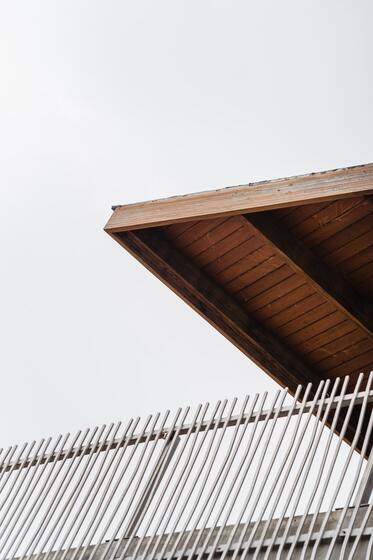
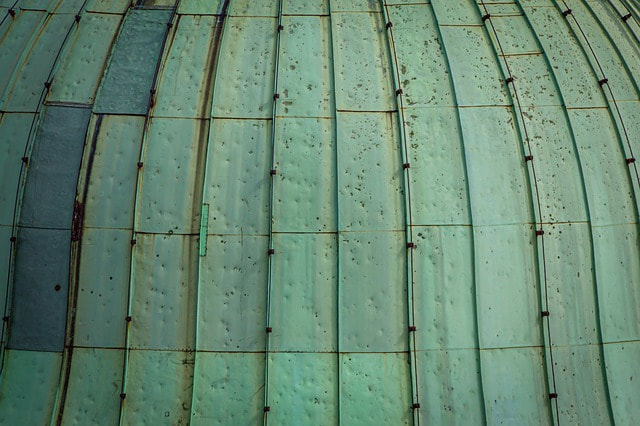
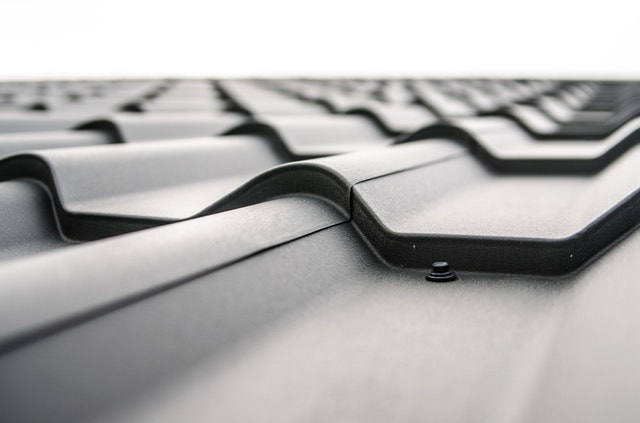
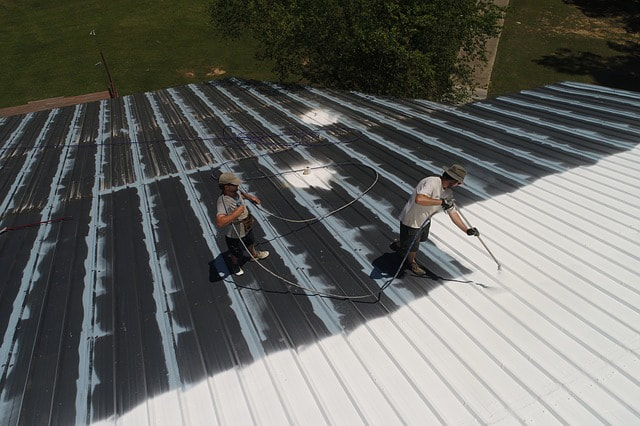
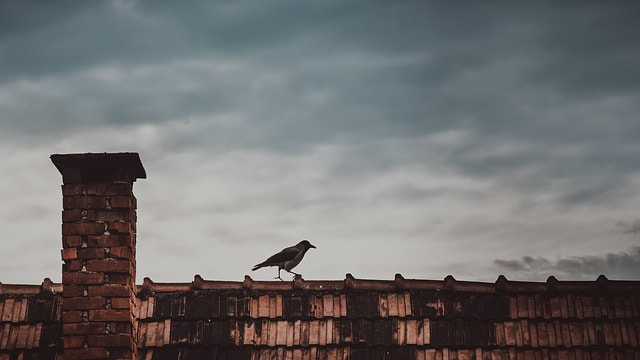
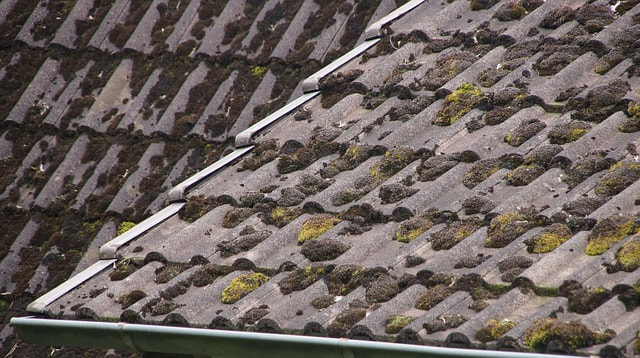

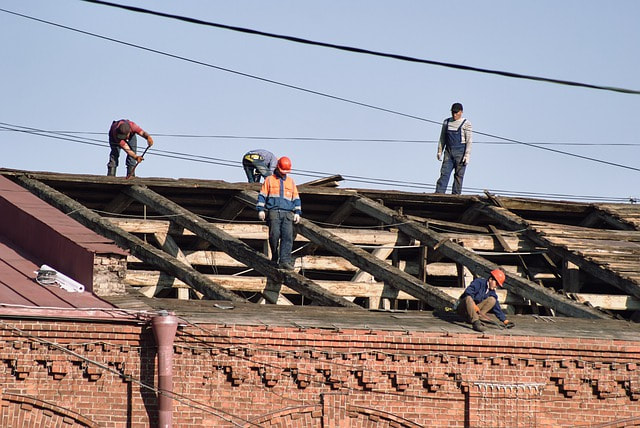
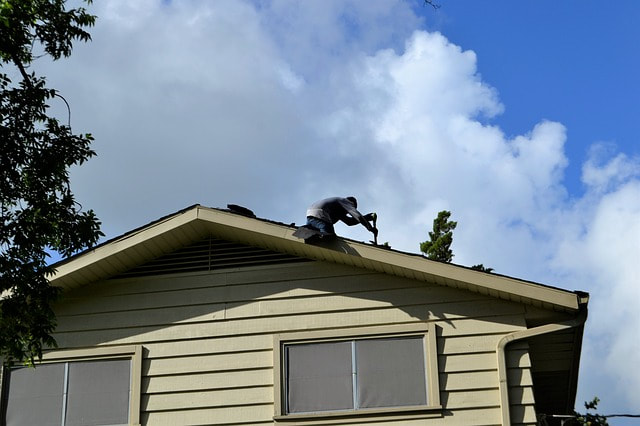
 RSS Feed
RSS Feed
